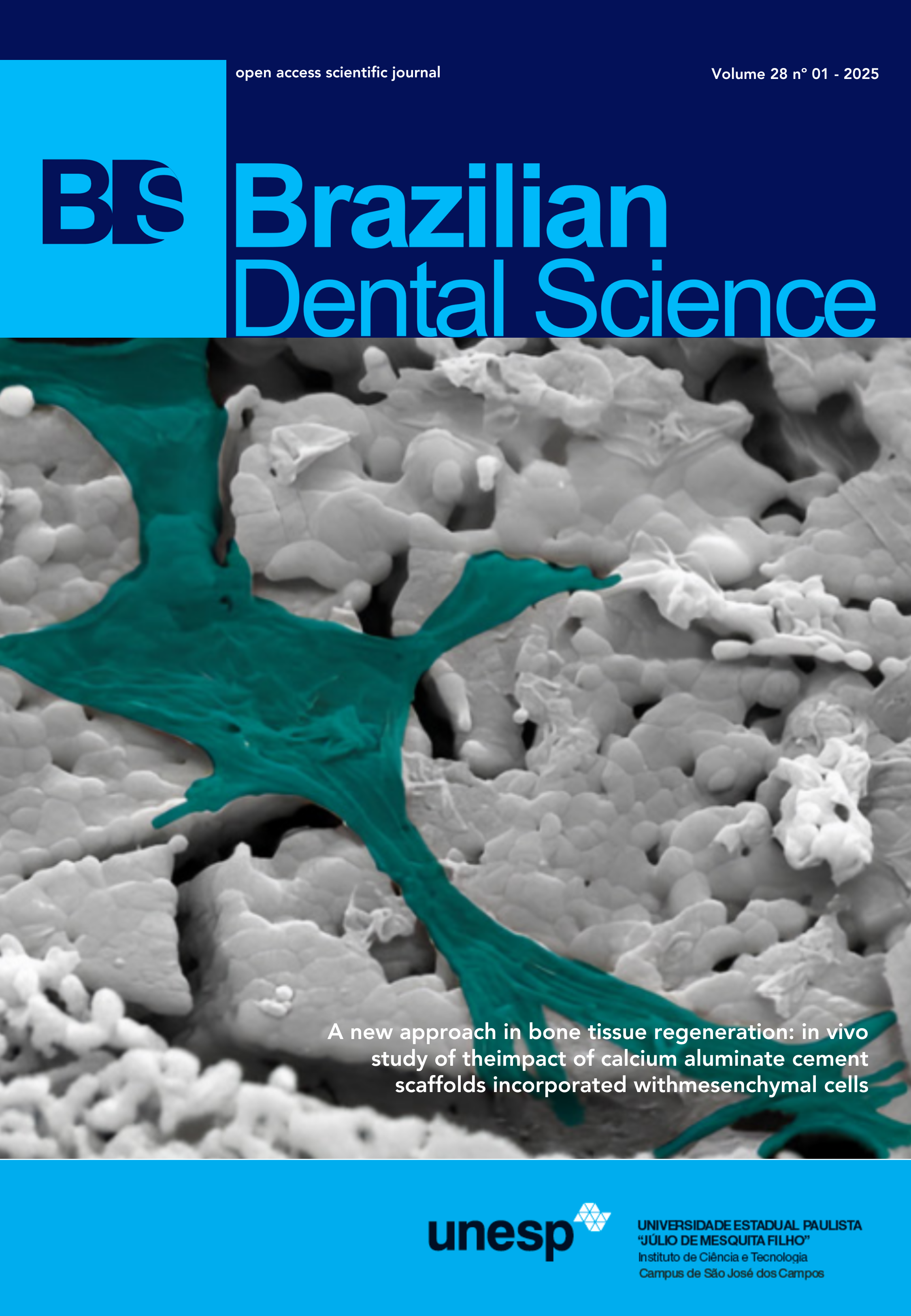Actual dimensions, design, and fabrication of readymade posterior palatal seal for completely edentulous patients
DOI:
https://doi.org/10.4322/bds.2025.e4542Abstract
Objective: To obtain the actual measurements of the posterior palatal seal area to assist in designing and fabricating a readymade posterior palatal seal for maxillary complete dentures. Material and Methods: Twentyfive completely edentulous patients were included in the present investigation, 13 females and 12 males with a mean age of 57.5 years. After making the definitive impressions and construction of the definitive casts, threedimensional digital models of the maxillary completely edentulous arches were obtained with an intraoral scanner. The actual curved and linear line measurements of the posterior palatal seal area on the digital maxillary models were acquired with MEDIT LINK 3.0.4 software package. Results: There was a higher mean for the actual curved dimensions than the linear line dimensions. The design and fabrication of a readymade posterior palatal seal were accomplished depending on the percentage of difference (11.17%). Conclusion: The difference between the actual and the linear line measurements of posterior palatal seal area was used for designing and fabricating a readymade posterior palatal seal that could be used in the manufacturing of the complete denture.
KEYWORDS
Complete, denture; Dentists; Denture retention; Edentulous.
Downloads
Published
How to Cite
Issue
Section
License
Copyright (c) 2025 Brazilian Dental Science

This work is licensed under a Creative Commons Attribution 4.0 International License.
Brazilian Dental Science uses the Creative Commons (CC-BY 4.0) license, thus preserving the integrity of articles in an open access environment. The journal allows the author to retain publishing rights without restrictions.
=================




























